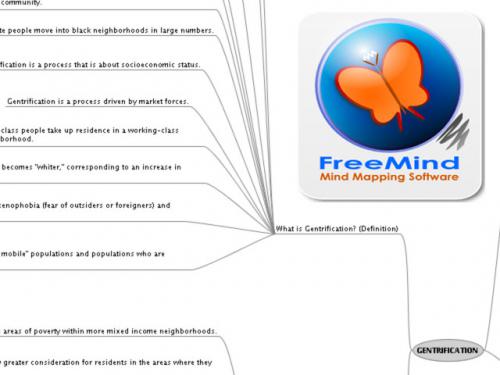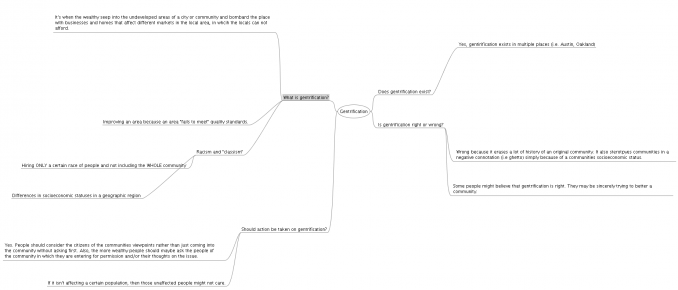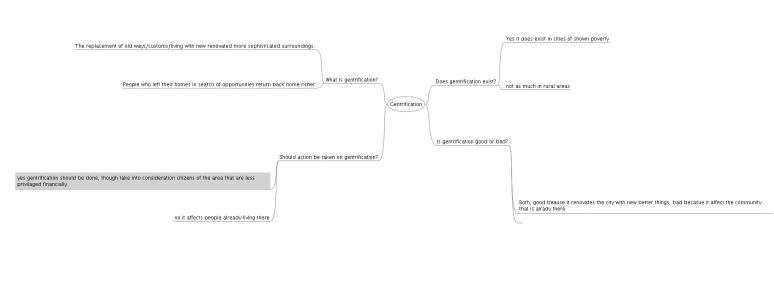You are here
Using FreeMind to Draft Controversy Maps
Primary tabs

A variation on the FreeMind logo, using both the butterfly and the light bulb. (Made by Dyvim using Inkscape)
http://freemind.sourceforge.net/wiki/index.php/File:Freemind_logo_by_dyv...
In this week-long assignment, students draw on stasis theory to generate a visualization of available arguments in a controversy.
For computer classroom (with Freemind software):
- FreeMind software
- 3-4 viewpoint articles on a single topic, assigned by the instructor or chosen by individual students
For a traditional classroom (no computers or no Freemind):
- large paper or posterboard
- 3-4 viewpoint articles on a single topic, assigned by the instructor or chosen by individual students
This lesson plan draws on stasis theory, and aims to help students visualize their controversy before composing Essay 1 (the Controversy Map).
Before coming to class, students read a chapter on stasis theory (I assigned a chapter from Ancient Rhetorics for Contemporary Students, but any textbook chapter on stasis theory will be adequate). To open class, students discussed the reading, and we reviewed four points of stasis (conjecture, definition, quality, policy) and the common questions that characterize those stasis points.
Next, I had students assemble in small groups (3-4 students per group). Each group created a Mind Map using FreeMind software. I asked each group to create a map with four arms—one for each point of stasis.
Each group then reviewed four articles I provided. I asked each group to record the arguments made by each author, and to map those arguments onto the appropriate stasis, using FreeMind. Two examples of the students' Mind Maps are displayed below:
Students then uploaded their Mind Maps to our course workspace (on pbworks.com). As a class, we viewed and compared each group's map. We discussed the similarities and differences between maps, and speculated on how and why these differences can exist.
Before the next lesson, I imported each group's Mind Map, and I combined their Maps into one comprehensive Map:
Instructors wishing to implement the preliminary group exercise should select 3-4 viewpoint articles on the same topic, and make those articles available to students. Additionally, instructors should familiarize themselves with the FreeMind software. Instructors should also determine how (and where) students should save completed Mind Maps, since most campuse computers will not support FreeMind.
DAY ONE:
1. Assemble in groups of 3-4 students, and create a Mind Map with the topic in the center (gentrification, in our example), and four arms protruding from the center. Each arm should represent one point of stasis.
2. As a group, review the articles provided. As you read, record the various arguments (both thesis and claims) each author makes.
3. Record the arguments in the Mind Map, linking individual arguments with the appropriate stasis. For example, an author who argues that gentrification is a problem in which race is central is making a definitional argument. This argument woud need to be recorded on the "Definition" arm.
DAY TWO:
1. Examine the comprehensive map created by the instructor. Reflect on (and/or discuss) how the map represents the field of the controversy. Based on the Map, how would you describe the controversy?
2. Using the research you have conducted on your own controversy, create a new map that records the various positions in your chosen debate.
Students completed this assignment as part of the Learning Record, but instructors may have their own strategies for evaluation. While the maps do not lend themselves to a quantitative grade, instructors may ask students to compose written reflections on group Maps and individual Maps. These written reflections may be more easily evaluated based on the students understanding of stasis theory.
This exercise is successful as a pre-writing exercise in Unit 1. Students are often confused when asked to describe the "field" or the "big picture" of a controversy in Essay 1, but this assignment helps them by representing this "field" or "big picture" visually.
At the end of Unit 1, some students remarked that, in writing Essay 1, they needed only to describe linguistically what they could observe visually on their individual Mind Maps.
This exercise was also successful in introducing stasis theory.
-

- Log in to post comments




